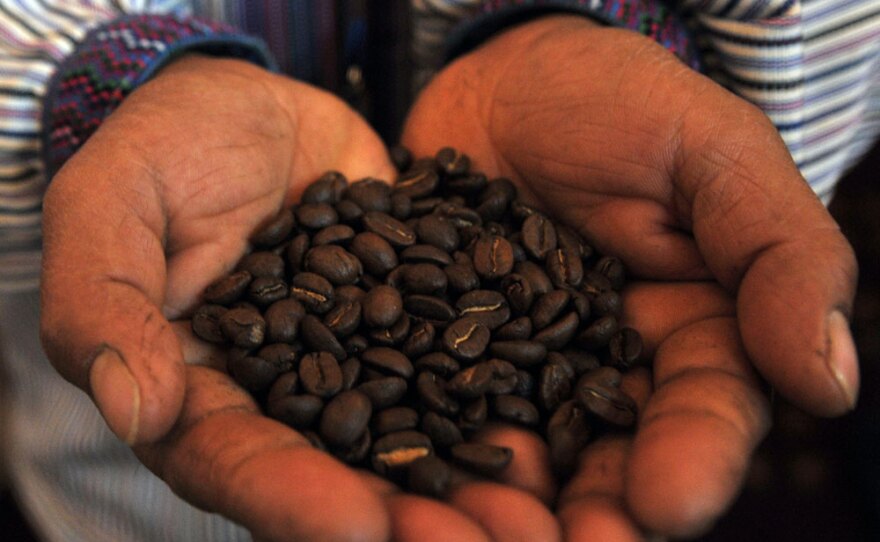The effects of climate change may be coming to your coffee cup.
The plants that produce coffee beans are notoriously sensitive, and small changes in temperature and precipitation can have big impacts on coffee quality and quantity. It may cause connoisseurs to cringe, but a warmer climate will encourage more coffee farmers to plant the heartier robusta varieties, which are caffeine-rich but bitter, instead of the mild, tasty Arabica coffees that Americans prefer.
"I often call coffee a Goldilocks plant. It likes it not too hot, not too cold. It likes it not too wet, not too dry. It doesn't like too much sun, it doesn't like too much shade," says Peter Baker, who studies coffee for the nonprofit CABI Bioscience. "The conditions are really quite limiting, and farmers have a real struggle, as we've seen in Colombia this last year or so — they've had the heaviest rainfall in recorded history really."
Growers recently gathered at the World Coffee Conference in Guatemala to discuss how the possibility of a warming planet could affect growing conditions and to figure out how to prepare.
Not far away, beneath two volcanoes in Guatemala's Antigua Valley, sits San Sebastian farm. The owner, Eduardo Falla, says his coffee's award-winning flavor is a factor of the rich volcanic soils — and the climate.
I often call coffee a Goldilocks plant. It likes it not too hot, not too cold. It likes it not too wet, not too dry.
"The microclimate we have is special," Falla says, using a wooden rake to turn coffee beans drying in the sun. "The temperatures rise, more or less, to 79 degrees and fall to 50 degrees at night. This is part of what gives it the quality."
So as it gets warmer, one strategy would be to move coffee production to cooler regions.
"You can move up the mountainside as it gets warmer," Baker says, "but you actually run out of space, because mountains have this unfortunate property of being pointed."
In Colombia, heavy rains cut coffee production by one-quarter last year, so the country has stepped up its weather monitoring. The national center of coffee research now has more than 200 meteorological stations to better forecast weather conditions, advise farmers and document climate trends.
The rains were associated with a strong La Nina weather pattern, which can't be blamed directly on climate change. But Baker says the record rainfalls are consistent with the generally more chaotic weather that climate models predict.
Brazil, the world's largest coffee grower, is also planning ahead for a changing climate.
Eduardo Assad of the Brazilian Agricultural Research Corp. says warm temperatures can cause coffee to flower early, reducing productivity. "The problem of coffee in Brazil is if you increase the temperature, you have problems of the flowering — this is the first problem," he says. "The second problem is the water deficits."
Assad says Brazilian researchers are trying to develop coffee hybrids better adapted to warmer and drier conditions, but that could take years. Alternatively, the coffee farms might have to move.
"We have 2 million hectares of coffee in Brazil, and with the new scenarios of climate change, maybe this production can go to the south of Brazil," he says.
Back under the volcanoes in Guatemala, Falla looks over some of his coffee plants that have flowered — but only on half of the branches.
Rain that fell two weeks earlier was insufficient, Falla says. If it doesn't rain again soon, he'll be forced to irrigate to stimulate more flowering. Growing coffee is an uncertain occupation, he says, and climate change adds yet another variable to the mix.
Copyright 2022 NPR. To see more, visit https://www.npr.org. 9(MDAzMjM2NDYzMDEyMzc1Njk5NjAxNzY3OQ001))






